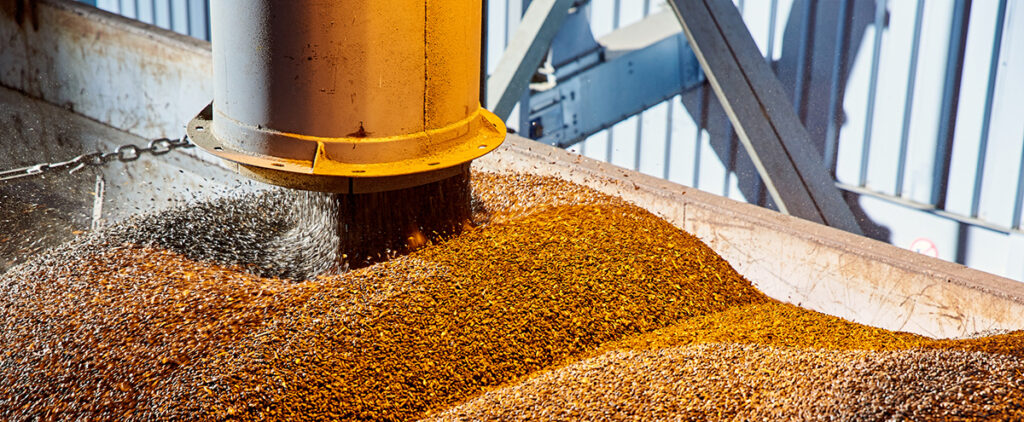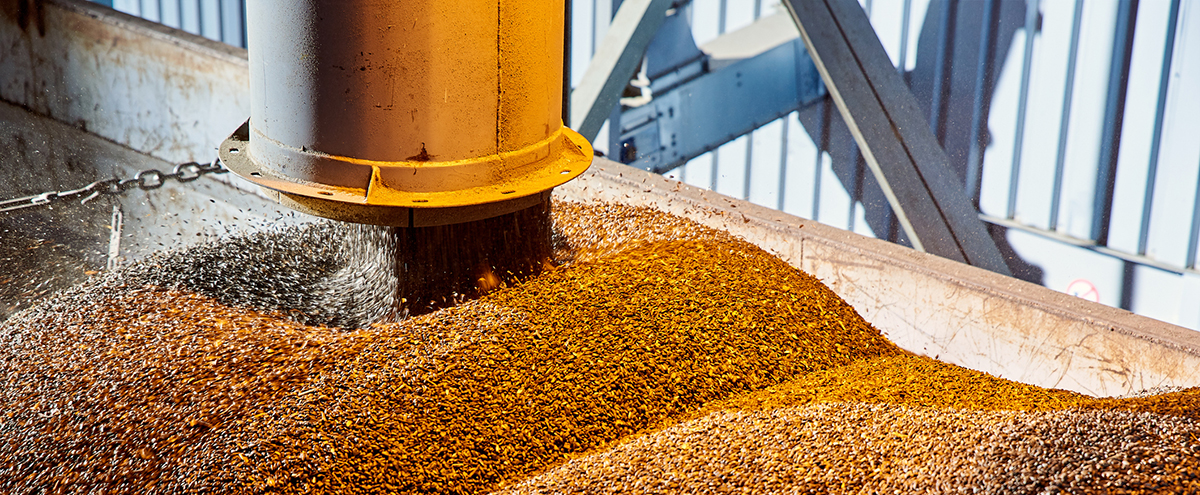
Most oilseeds only amount to a literal hill of beans until the valuable oil inside is separated from the solid meal through the process of “crushing.” That process lends its name to the calculation of a “crush margin,” which refers to the profit margin that oil millers make. This figure is based on the difference between the cost of raw seeds and the price of the oil and meal byproducts they produce and can make or break a processing plant.
Understanding how crush margins are calculated—and more importantly, knowing which factors processors can control to improve these margins—is key to turning a profit in the oilseed industry.
What is a crush margin?
In oilseed processing, crush margin refers to the value of the oil and meal extracted from a bushel of beans, minus the cost of raw beans. Although this equation doesn’t take operating expenses into account, those costs ultimately impact a processor’s bottom line, making it imperative for mills to maximize their crush margins.
Nearly 2 billion bushels of soybeans are crushed annually, making it the world’s most abundant oilseed. Typically, a bushel of soybeans weighs approximately 60 pounds and yields about 11-12 pounds of oil and around 45-47 pounds of the meal—but these outputs depend on several factors, such as:
- Oilseed varieties being processed
- Growing conditions and climate
- Planting and harvesting dates
- Seed preparation and pretreating
- Processing methods and equipment
Generally, processors can recover about 18% of the oil from soybeans by weight, while producing around 75-80% soybean meal. Using these percentages, the basic crush margin formula for soybeans would be:
(oil price x 0.18) + (meal price x 0.80) – oilseed cost = crush margin
With crude soybean oil prices near $0.85 per pound and soy meal hovering under $450 per ton at the end of May, according to data from the USDA’s Agricultural Marketing Service, the combined value of the byproducts from one bushel of beans totals just over $20. Considering that a bushel of beans costs around $17, that leaves a current soybean crush margin of about $3.
Oil almost always fetches a much higher price than the meal, due to its usefulness in food, pharmaceutical, and emerging biodiesel markets. For that reason, the more oil processors can crush, the more profit they stand to gain. Simultaneously, removing more oil increases the protein concentration in the meal, improving the value of the remaining meal for the animal feed industry.
Whether processing soybean, castor oil, sunflower, or other commodity seeds, the ultimate goal is to extract the most oil from the meal as efficiently and cost-effectively as possible.
Chemical vs. mechanical extraction margins
Most high-capacity soybean processors rely on chemical extraction to maximize oil recovery. This process involves soaking the seed material in a solvent like hexane to chemically separate the fats from the solid meal. Solvent extraction is highly efficient, leaving less than 1% residual oil behind. Both byproducts must be further processed to remove the remaining hexane, which is highly flammable and toxic.
Due to the costs and health and safety risks associated with solvent use, chemical extraction is best suited for large-scale plants that run more than 1,000 tons per day (TPD). This method isn’t the most economical for small- and mid-scale processors, who often turn to mechanical pressing instead.
Mechanical extraction uses brute force to physically squeeze oil out of the seeds, using a screw press like the Anderson Oil Expeller® to generate frictional heat and high pressure. This method offers a simpler, less expensive alternative for smaller plants without using harmful chemicals. The tradeoff is that most mechanical processors leave between 6-9% residual fat in the meal.
To improve the efficiency of mechanical extraction, processors can pair the screw press with high-shear extrusion technology like the Anderson Dox™ Extruder. The Dox is designed to mechanically shear, cook, and dry the seed material for improved oil recovery. This added step breaks down the oilseeds to release the oil inside while deactivating harmful enzymes, drying excess moisture, and cooking the proteins for more efficient pressing. With extrusion pretreatment, processors can achieve residual oil levels as low as 5%.
Even at these rates, small mechanical processors need to find creative ways to maximize their profits to compete against the superior crush margin of large solvent extraction plants.
3 ways to improve mechanical crush margins
Small-scale oil mills may not be able to compete with the volume of oil that large-scale plants process or the recovery rates they achieve. But they can differentiate themselves in other ways:
- Go organic
While solvent extractors dominate general oil and meal markets, they can’t produce organic products because of the harmful chemicals involved. By not using any chemicals, mechanical oil mills have a huge opportunity to process organic and non-GMO oil and meal, which can command premium prices. As the demand increases for organic options in both human food and animal feed, tapping into these specialty markets can boost a mechanical processor’s crush margin.
- Bypass the competition
Another way that small mechanical processors can increase profits is with the production of bypass protein. Essentially, this involves overcooking soybeans with additional heat processing to create proteins that bypass the first stomach compartment in ruminant animals like cattle. Research shows that nutrients absorbed later in a ruminant’s digestive system support milk production, rather than supporting meat production when digested in the first stomach. By boosting bypass protein in the meal, mechanical processors can target dairy farms and improve their overall crush margins.
- Skip the heat
Cold-pressed oil presents another premium market for mechanical processors. Instead of using traditional steam vessels or extrusion systems to cook oilseeds before extraction, cold pressing skips these steps by sending raw material straight to a press like the Anderson Super Duo Expeller®. Cold-pressed, or virgin, oils sell at higher prices than standard heat-processed oils, making this method an attractive option to improve profits. Read more about cold-pressing here.
- Minimize energy consumption
While energy use and other operating expenses don’t directly impact the crush margin, these are all costs that ultimately encroach on overall profit. The less energy a plant consumes, the more profit goes toward the bottom line.
Installing a Dox Extruder upstream of an Expeller can improve the overall efficiency of a mechanical processing plant—without the expensive, energy-draining cooking vessels traditionally used to steam-heat beans. The Dox doubles the capacity of the downstream press and doubles the life of the pressing parts, which helps to minimize operating costs and maximize profit margins.
Maximize profits with expert guidance
With over a century of experience serving oilseed processors around the globe, Anderson International provides the expertise and equipment to build the most energy-efficient systems possible. Ask us how you can set up your plant to optimize profits without reverting to chemical extraction.
To learn more about maximizing crush margins at your processing plant, contact the experts at Anderson.
